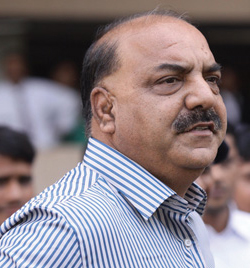
Ahmedabad, September 26: Gujarat 'encounter cop' Tarun Barot has been arrested in Sadiq Jamal case in Gujarat.
Barot, currently a Deputy Superintendent of Police in Mehsana District was on the radar of CBI for the last six months.
Gujarat Police had claimed Sadiq is a Lashkar-e-Toiba (LeT) terror suspect who was on a mission to kill Chief Minister Narendra Modi.
A CBI officer probing the Sadiq Jamal encounter case confirmed Barot has been arrested and taken to CBI office in Gandhinagar.
Barot had taken custody of Sadiq from another encounter specialist, Mumbai' Police's Daya Nayak.
Sadiq, a Mumbai gangster, originally from Bhavnagar in Gujarat was killed near Galaxy Cinema at Naroda area of Ahmedabad in January 2003.
This follows in the wake of the CBI arresting Mumbai journalist Ketan Tirodkar in July - was the first arrest in the Sadiq case.
Tirodkar, on questioning, had disclosed to CBI that Barot had brought the deceased to Ahmedabad to be killed.
Barot was a sub-Inspector with the Detection of Crime Branch (DCB) in Ahmedabad in 2003 during the relevant period.
CBI's FIR in this case also includes DCB's encounter team - the Gujarat 'encounter king' DG Vanzara (jailed in Sohrabuddin encounter case), former DGP of Gujarat KR Kaushik, serving IPS officer PP Pandey (now CID chief), Daya Nayak and Central Intelligence Bureau officer Rajendra Kumar.






Comments
Add new comment